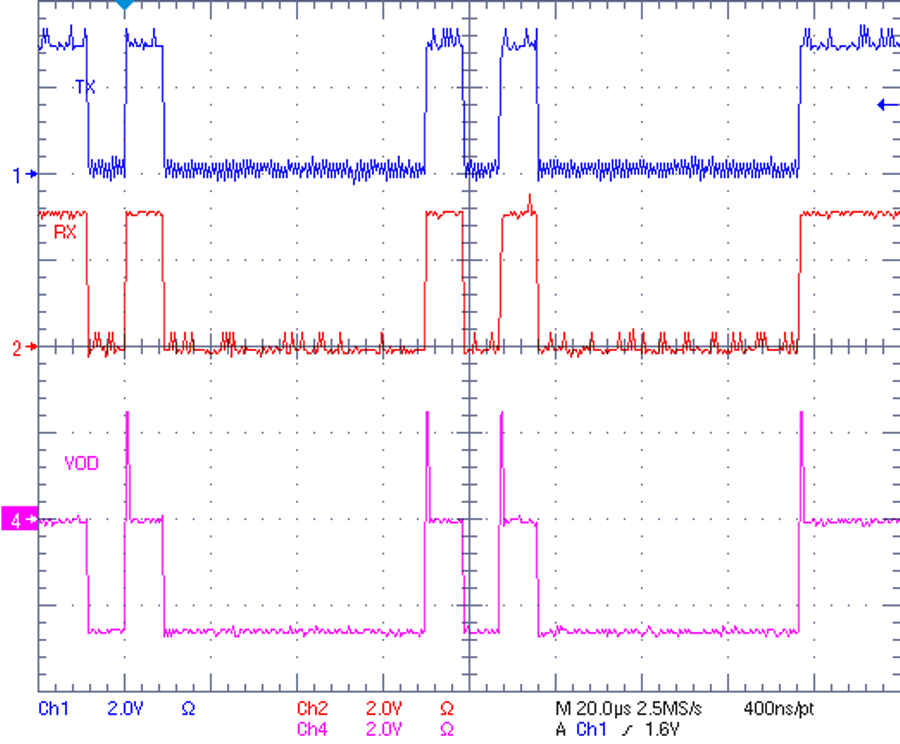SLLA574 March 2022 THVD1406 , THVD1426
2.2 Test Two: Sending Data Below Recommended Operating Conditions
In the second test, with identical hardware setup as the first one, the same string is sent with the baud rate at 115200, which is considerably lower than THVD1426’s recommended operating condition (12 Mbps). The purpose of this test is to check if THVD14x6 works at a data rate lower than the recommendation in the data sheet. One bit width (8.6-μs) of input data is much longer than the maximum active time of the driver (1.45-μs). As the waveforms of the last bit in previous test show, the differential bus voltage becomes 0-V as the driver finishes its active time shown in Figure 2-3. Therefore each 1 bit input shows a spike on bus before settling to 0-V. Given that the receiver threshold Vth+ is -20-mV, this 0-V generates a high at receiver output. Therefore, correct bits are still produced by the receiver. In system design, it might be a good idea to add some pull-up resistors on the A side and pull-down resistors on the B side. These bias resistors would generate a constant voltage higher than 0-V on the idle bus for better noise immunity. For details about how to choose resistor values refer to the RS-485: Passive Failsafe for an Idle Bus article.
 Figure 2-3 Auto Direction Test of
THVD1426 with Low Data Rate
Figure 2-3 Auto Direction Test of
THVD1426 with Low Data Rate